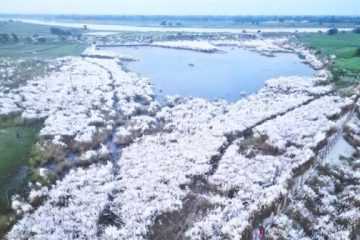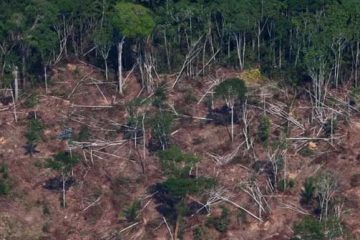Forest Mensuration
Assessing climate change impacts on floral diversity
Dr. Md. Mizanur Rahman
 Forest Mensuration provides forest inventory, forest resource monitoring, measurement principles, stand structure parameters, different sampling methods and applications. It takes into account all the resources of a forest, including timber and non-timber vegetation parameters, natural regeneration, lesser vegetation, coarse woody debris, and carbon flux.
Forest Mensuration provides forest inventory, forest resource monitoring, measurement principles, stand structure parameters, different sampling methods and applications. It takes into account all the resources of a forest, including timber and non-timber vegetation parameters, natural regeneration, lesser vegetation, coarse woody debris, and carbon flux.
Permanent mensuration plots: Permanent mensuration sample plot provides the databank of the individual tree. It manages the network of permanent and temporary sample plots representing a wide range of species, sites, yield classes and management practices. The sample plots provide the basic information (data and analysis), necessary information for planning, policy formulations including those related to climate change, inventory and production forecasting purposes. The writer proposes to establish 300 m² (radius = 9.77m) circular plots at the core areas of each conservation sites so that anthropogenic disturbances play a minor role on the changes. The full sample plot will be considered for the data investigation of the mature trees (>10cm dbh), coarse woody debris (>5cm dbh and >1.37m height), saplings and climbers. Within the 300m², a subplot of 100m² area (r=5.64m) will be considered for the inventory of established seedling and another subplot of 12.6m² area (r=2m) for ephemerals. The distance between two adjacent plots will be 100m in any direction.
The number of plots will be determined by the equilibrium condition of species-area curves. Each plot will be divided into several sub-plots for measuring different parameters.
Criteria for selecting mensuration sites
o Core areas
o Presence of minimum anthropogenic disturbances
o Mixed forest
o Natural-semi natural forest
o High species richness
o Heterogeneous forests
o Presence of natural regeneration
o Highly diversified forests (diversity in species composition; horizontal and vertical structure; vital, social and age classes)
o Presence of ground vegetations (shrub, herbs and climbers)
o Presence of indicator, keystone, umbrella, flagship, rare and endangered species
Mensuration sites: Considering the above criteria the core areas of the following conservation sites can be selected as mensuration sites.
Duration: Data of the following parameters will be collected at 10-year interval for 50 years to predict the impacts of climate change on floral diversity. It is noteworthy to mention that a major portion of the change will be occurred through anthropogenic disturbances. Considering the level of protection and disturbance index it will be possible to assess the climate change impacts.
o Parameters
o Number of species to measure the change of species richness and species composition
o Diameter at breast height, height, crown length, trunk height of each mature tree to measure the temporal carbon flux
o Crown classes of trees (dominant, co-dominant, intermediate and suppressed tree) to measure the change in social class distribution
o Vital classes (high, medium, low and poor) of trees to assess the change in tree vitality
o Number of sapling, established seedling, ephemeral for each tree species to measure the change in natural regeneration pattern, natural succession and potentiality of early successional species
o Diameter and height/length of standing and lying of dead wood to measure the temporal mortality
o Number of species-wise shrubs and climbers, and the approximate proportion of each herb species to measure the change in ground vegetation
o Positioning of trees to measure the changes in clumping pattern
o Abundance and species richness of alien invasive species to assess the trend of colonization
Biodiversity indices
Species richness: The species richness will determine the sensitivity of each ecosystem and their resident species.
Similarity index (community coefficient): The similarity index will help to find out the trend of species overlapping
Importance Value Index (IVI): The Importance Value Index will assess the change in structural role and dominance of each species on the basis of relative frequency, abundance and dominance.
Shannon-Wiener Index (diversity index): Diversity index will measure the changes in species diversity and community composition.
Simpson Index (the concentration of dominance): The concentration of dominance will determine the change in distribution pattern of different species.
The evenness: Evenness will measure the relative abundance of different species making up the richness of an area.
Disturbance Index: This will assess the trend of human disturbances. The intensity of each disturbance element will be categorized on the basis of qualitative assessment. Each category will be weighted.
Dr. Md. Mizanur Rahman, a biodiversity specialist, is Assistant Commissioner, Jhalakathi Collectorate (mizan_peroj @yahoo.com).





